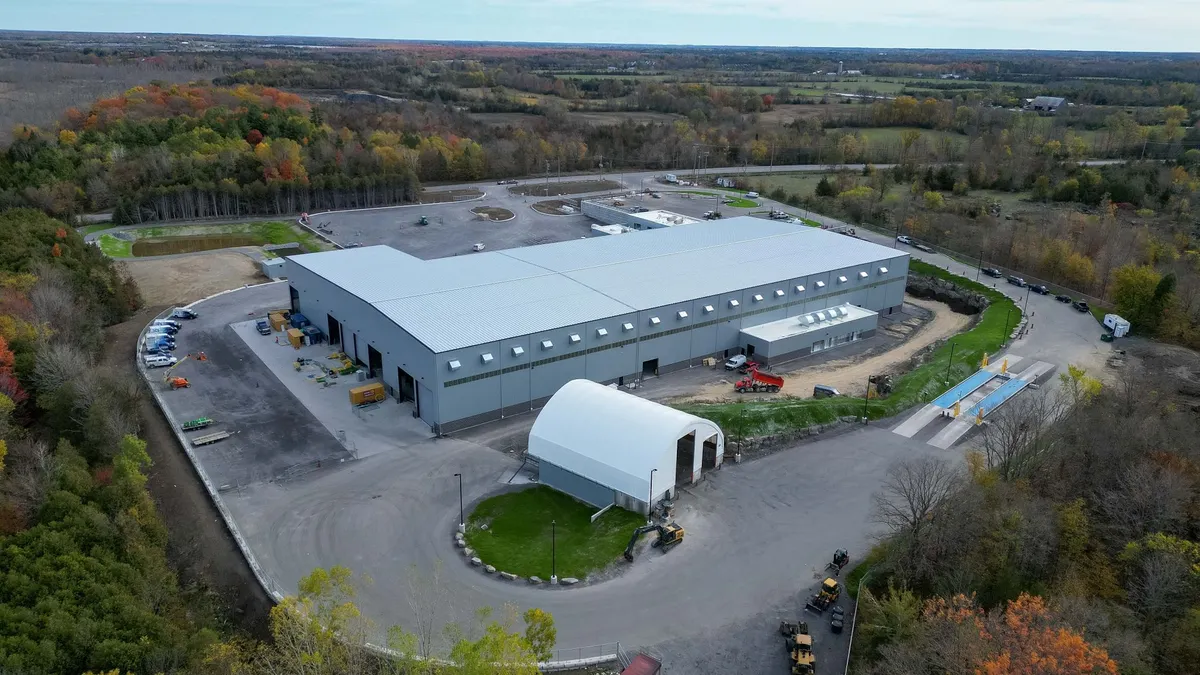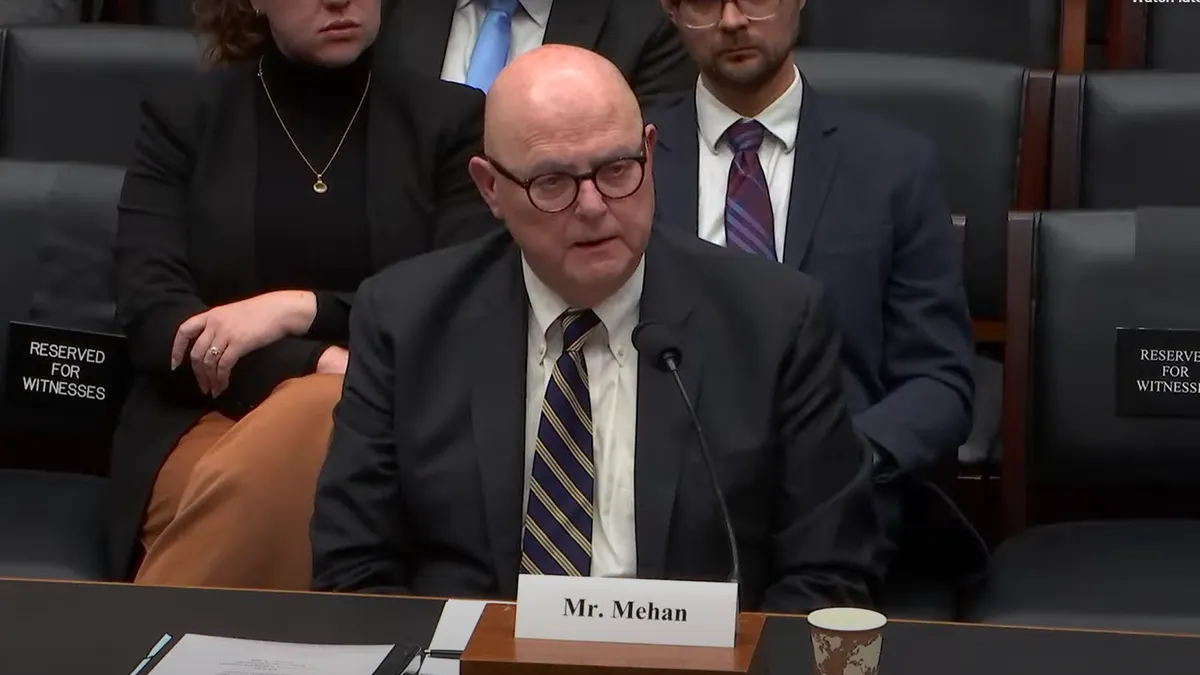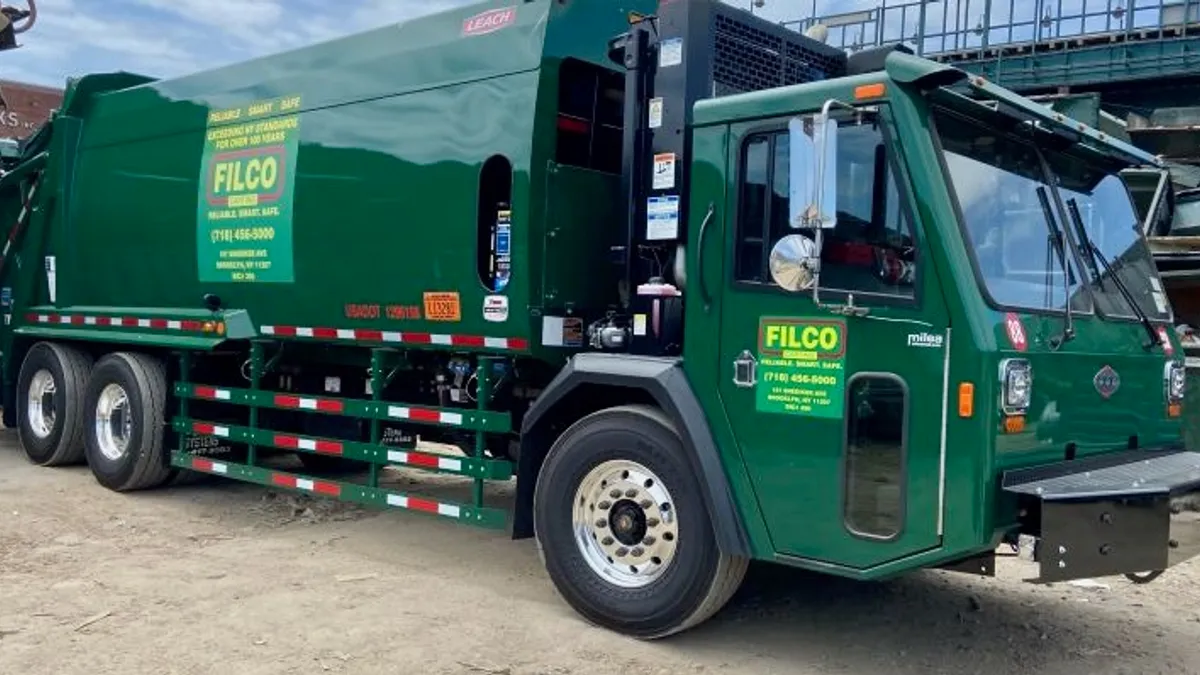Editor's Note: This is the second of a two-part story. Read part one on safety here.
Efforts to change New York City's private carting industry have recently been focused on safety, but another key question is also at the heart of the issue — what happens to the waste once it's picked up?
Unlike the residential side, it's unknown exactly how much commercial waste is generated in the city. Estimates range from 3.5 to 5.5 million tons per year, however the city believes the true number is on the lower end of that range. Recycling rates are also vague and reform advocates say that more must be done. New city regulations aim to change this, but some industry representatives say that the story behind commercial recycling isn’t so simple.
Last year, Transform Don't Trash (TDT) reported that a city study had previously estimated the commercial recycling rate to be 25%. This year, TDT released new numbers based on 2015 data saying that the rate may now be in the 19-22% range (not including construction and demolition waste). The rates were calculated using annual solid waste transfer station reports submitted to the state Department of Environmental Conservation (DEC).
Justin Wood, who performed the data analysis for TDT, said it’s not possible to see whether material collected in the city was taken to another region in the state or to New Jersey. He also noted that some transfer stations may handle bottles and cans from redemption centers, but didn't estimate that it accounted for a large percentage of the overall material being processed.
Wood also said the DEC data shows more cardboard and paper being separated than metal, glass, or plastic — which goes against the goal of recycling.
"The rate remains low despite every company out there scrambling to rebrand itself as a green company," said Wood. "They’re just going to chase what generates some revenue in the short term with minimal investment and infrastructure."
While low, these estimates are still higher than the city’s 16% residential recycling rate. The Department of Sanitation (DSNY) also has a long-term contract with Sims Municipal Recycling which protects it from major shifts in commodity prices. Most private carting companies don’t own material recovery facilities (MRFs) and are more subject to these shifts.
TDT argues that the difference here is residents can count on DSNY to recycle the material they separate, whereas business owners can't count on the same from their haulers. The group says that a zoning system would provide companies more stability and encourage them to invest in stronger recycling programs.
"What we’re finding is on the generator side there is a desire to recycle," said Brigid Flaherty, organizing director for TDT. "People are doing source separating and then it goes into the back of the truck and you don’t know what happens after that."
Kendall Christiansen, manager of the National Waste & Recycling Association’s (NWRA) New York City chapter, disagreed with the notion that recycling isn’t happening.
"New York’s commercial and industrial waste has always been recycled at a high rate, especially given the huge volume of paper generated by office buildings, and construction and demolition material from the city’s nonstop building industry," Christiansen wrote in an emailed statement. "None of its locally-based haulers own landfills, giving them the direct incentive to recover as much waste as possible — but that also means dealing with constantly shifting market dynamics."
Another difference between residential and commercial recycling has been the requirements for various businesses. DSNY has announced new rules that will streamline the process to make recycling standards the same across homes, offices, restaurants, and elsewhere. Single-stream recycling will be allowed if carters can demonstrate the capacity to process those materials. Select categories of businesses will also be required to separate their food waste for collection starting this summer.
Mike Hellstrom, business manager for Laborers Local 108, agreed with the NWRA's stance that carters are doing their part. He supports the city’s new streamlined recycling rules, but said more needs to be done to make sure everyone understands the system.
"The city has an obligation here to invest a substantial amount of money in a public education campaign as they did in the residential sector," said Hellstrom. "Until the city does that it’s easy to throw mud onto the contractors."
Efficient reporting could lead to more accurate data
As with the safety debate, these questions over recycling diversion can only be fully answered by better data. In an effort to clarify how much material is being collected, DSNY has proposed new rules for recycling facilities. Businesses would have to register with the department, submit to inspections, and provide detailed quarterly reports. Non-compliance could result in hefty fines.
Antonio Reynoso, chair of the City Council’s sanitation committee, sees this as a response to the city’s challenge obtaining data for a city zoning study. One reason for the delay was that some businesses provided the information in a variety of formats.
"They saw how inefficient their reporting was," said Reynoso. "You shouldn’t be handing documents over to the government on a composition notebook."
This could possibly be seen as a way for DSNY to assert more control over the commercial waste sector, which is key to reaching the city’s goal of 90% diversion from landfills by 2030. DSNY would not comment on the rule specifically because it is still pending, though did further define its relationship to the private carting industry.
"DSNY regulates commercial establishments by creating and enforcing rules related to material set-out, street cleaning, and recycling, among other areas," Kathy Dawkins, DSNY’s director of public affairs, wrote in an emailed statement. "The Department is committed to achieving the city’s zero waste goals as they apply to both residential and commercial generators."
Anticipating the next step
The discussion of a zoning system comes at a time of change for New York City's private carters. Many companies are still spending significant amounts of money to update their fleets by 2020 to meet city emissions standards and are buying new equipment to collect organics or process recyclables. Yet others have said they're hesitant to invest in new technology until the zoning issue is resolved.
At the very least, the study will provide more data to a debate that is easily dominated by rhetoric. All involved are ready to start moving forward on concrete solutions.
"We’re going to find out with the city and once we do I think that waste franchising is going to be the natural step forward," said Reynoso, before adding that if the study shows otherwise he will support whatever makes the most sense.
The NWRA has downplayed the importance of the study, though hopes it lends credence to their claims that private carting companies are already efficient. Both on a national and local level the organization is continuing to push greater safety awareness and training.
The city expects to release the zoning study by late spring and Waste Dive will be following the results.

















